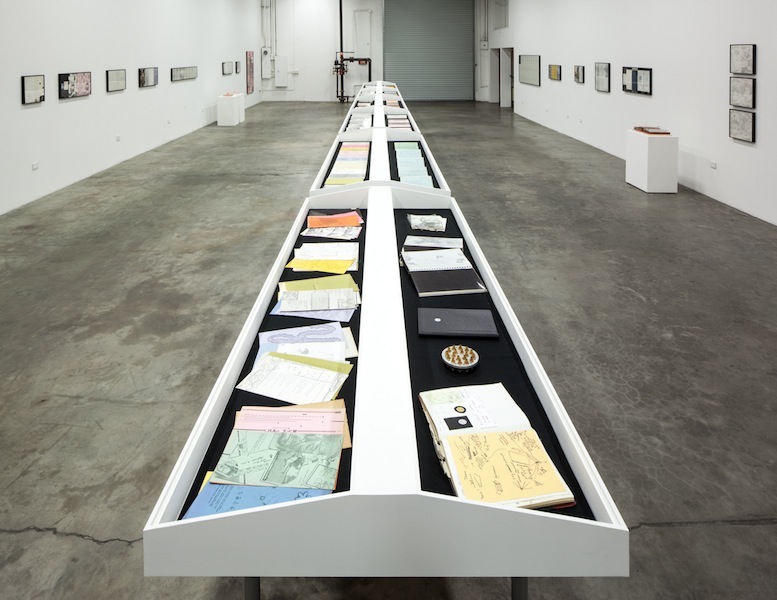
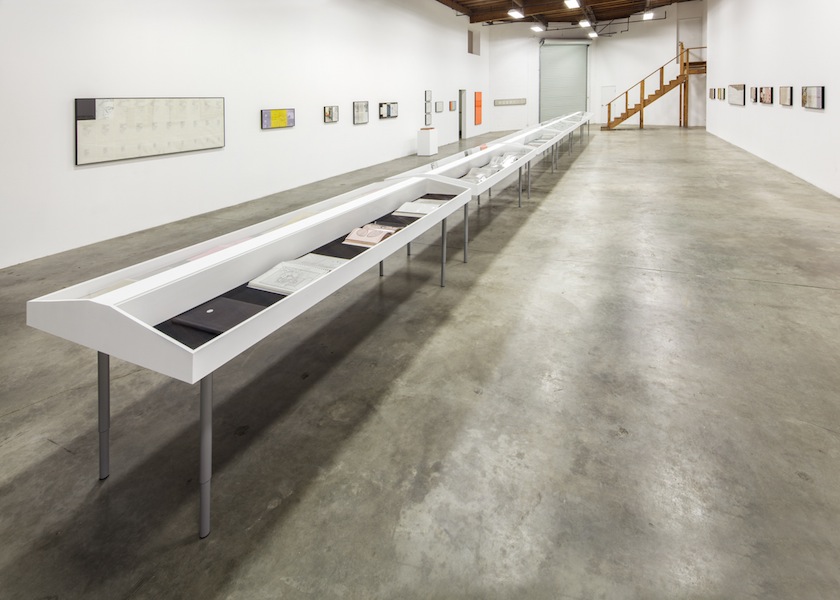
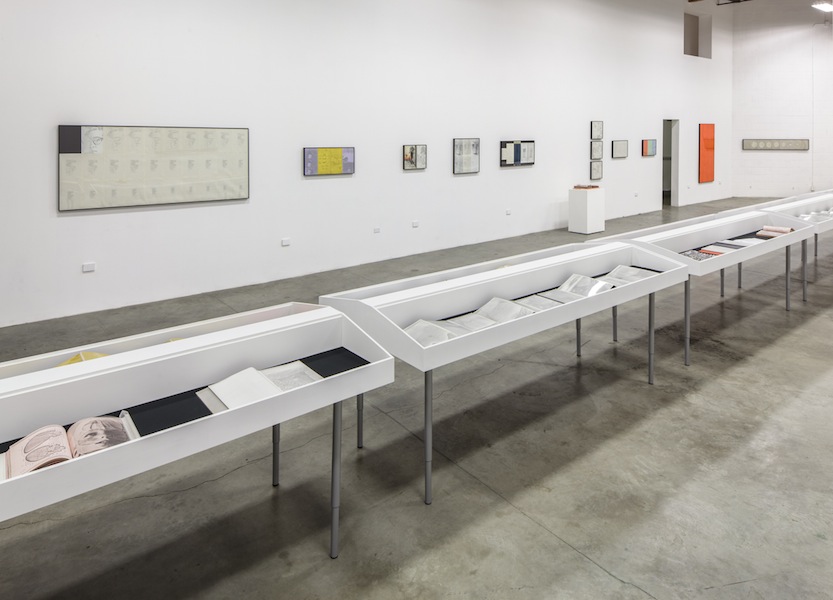
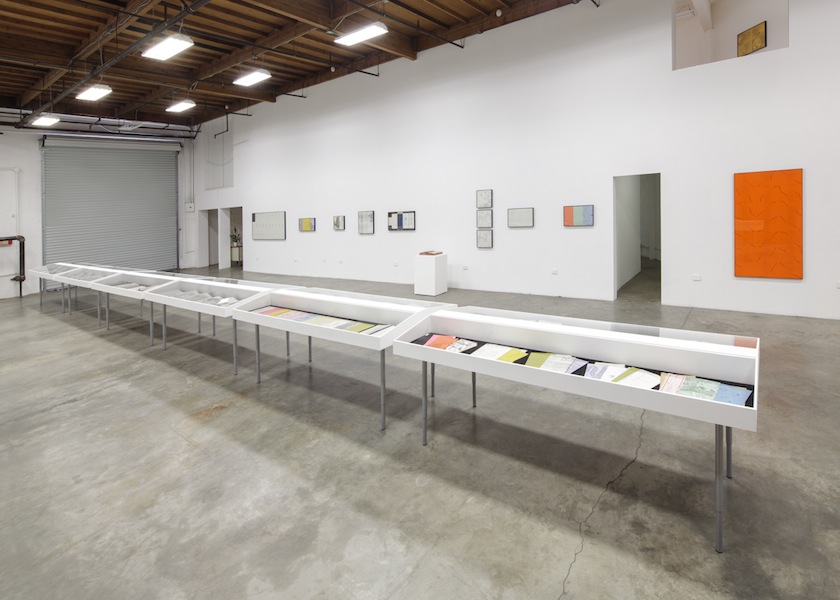
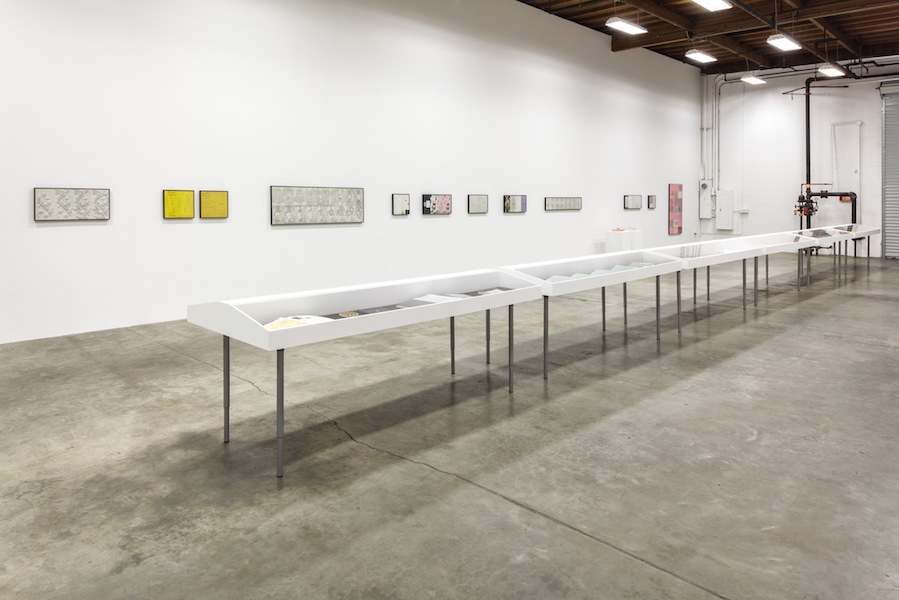
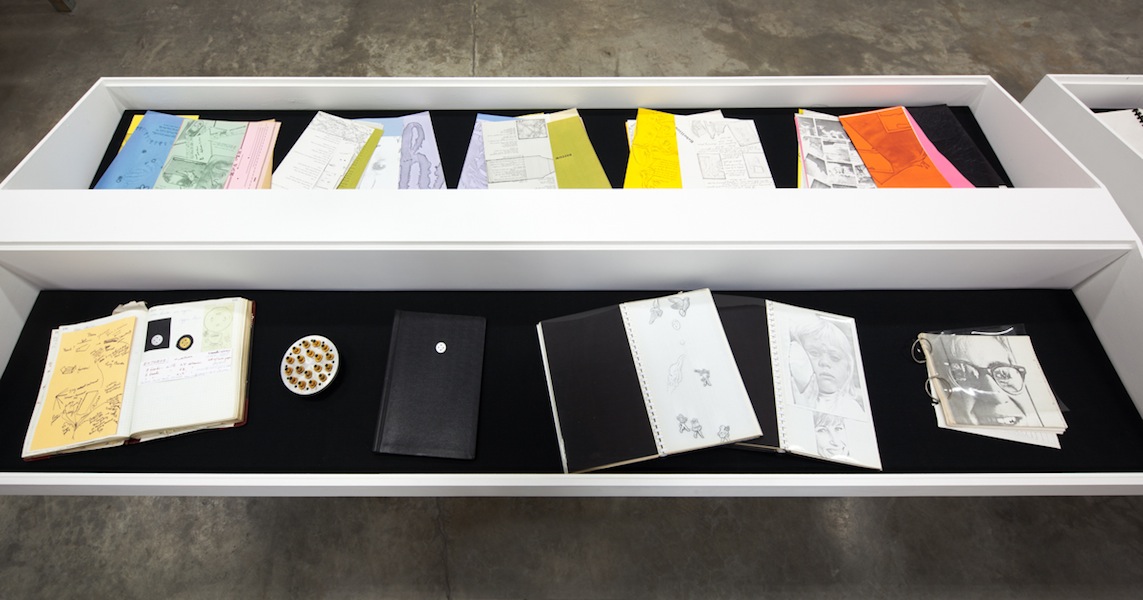
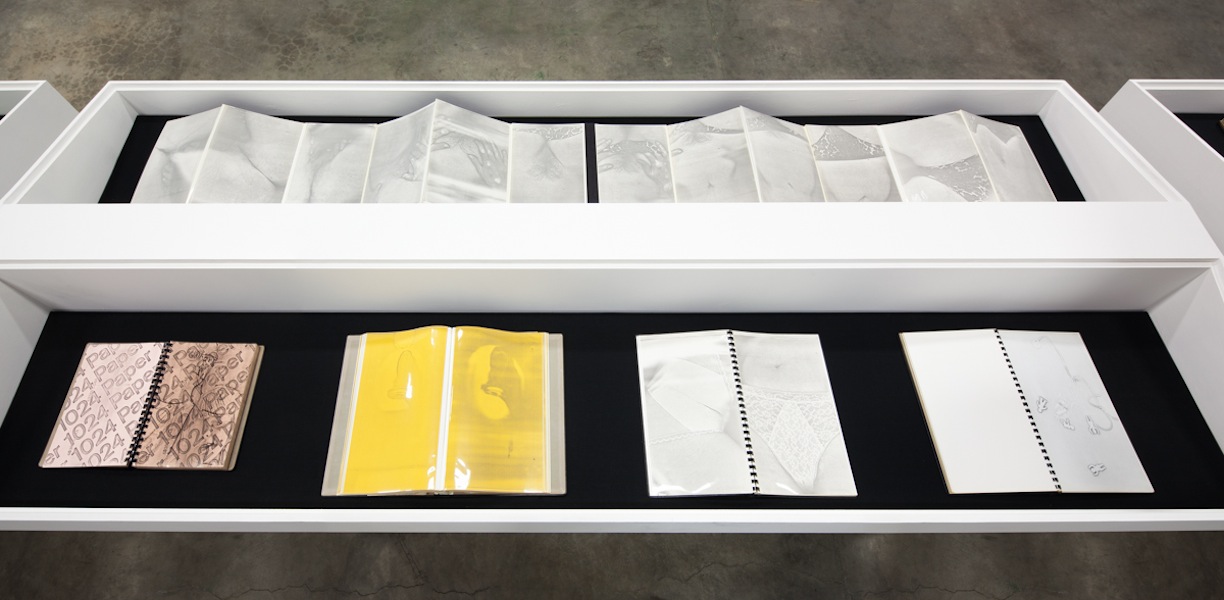
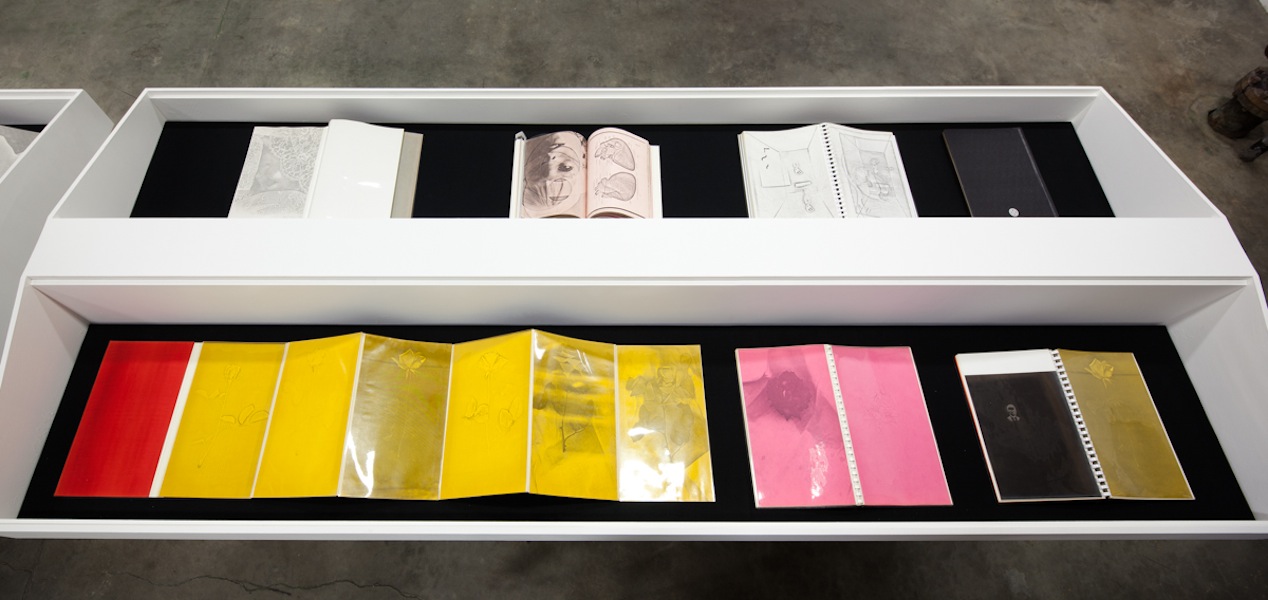
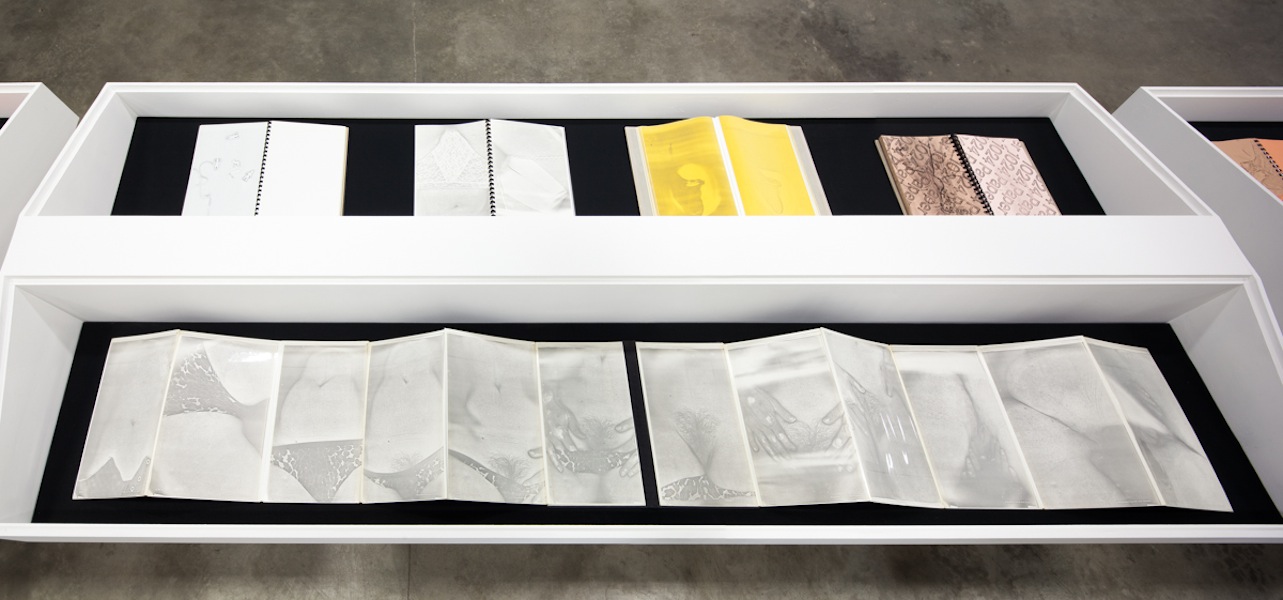
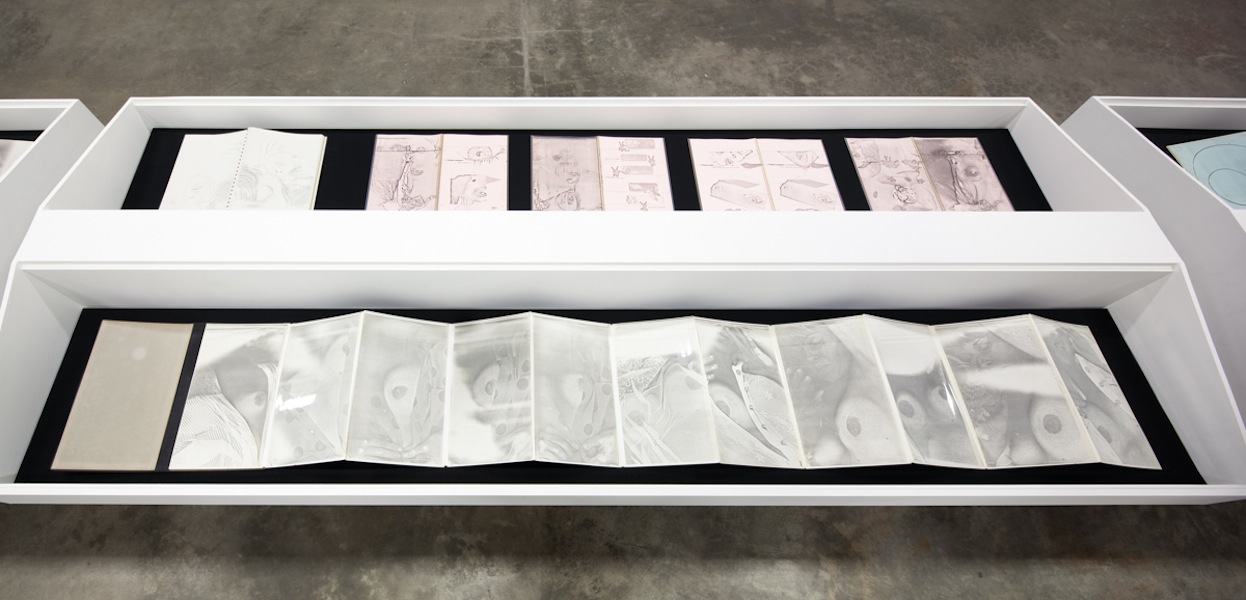
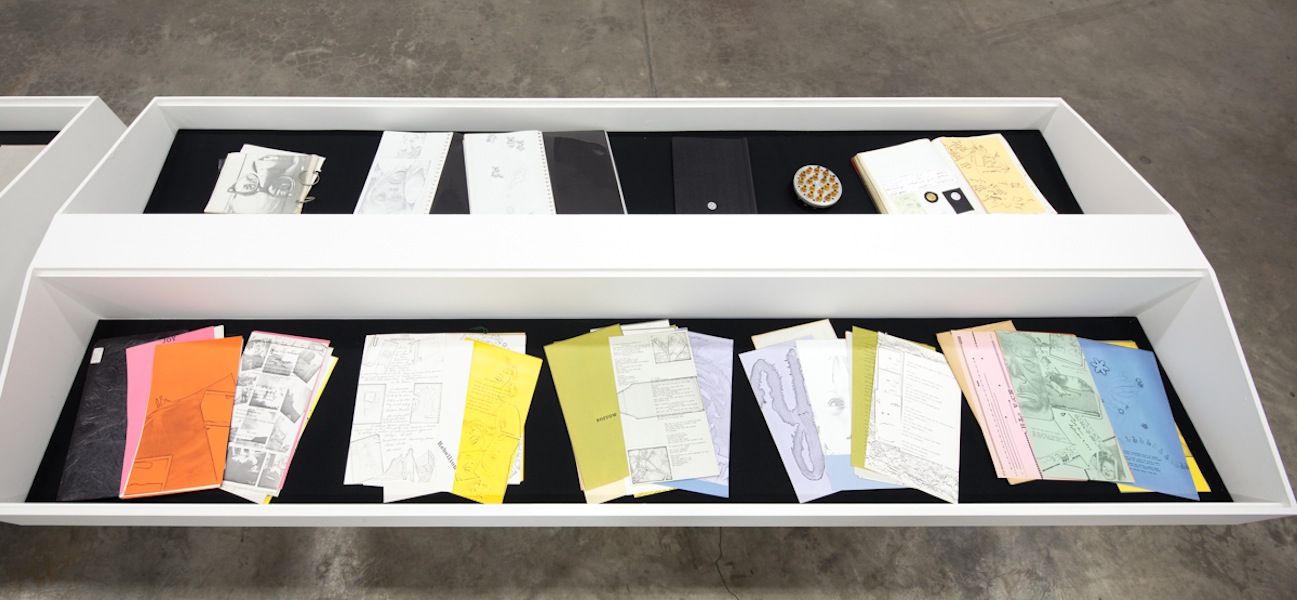
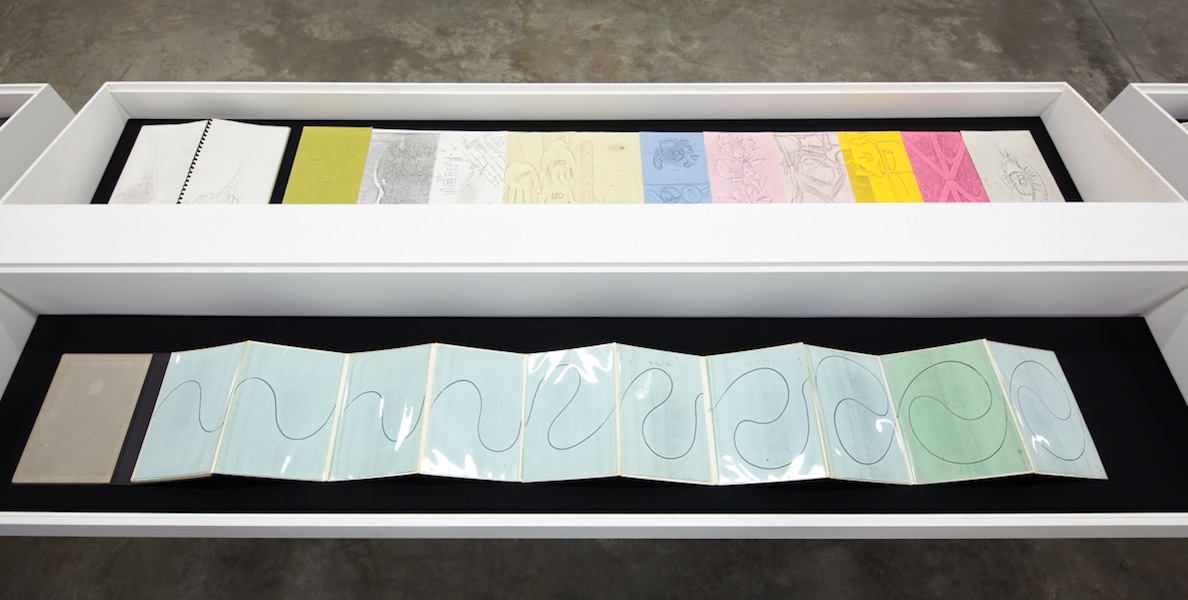
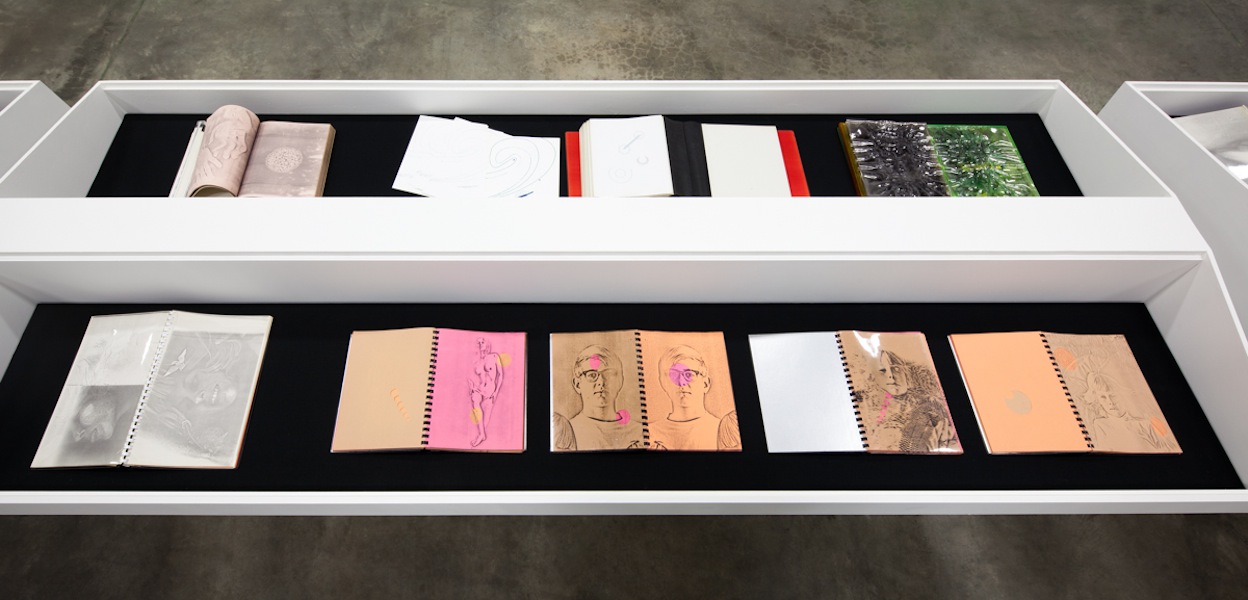
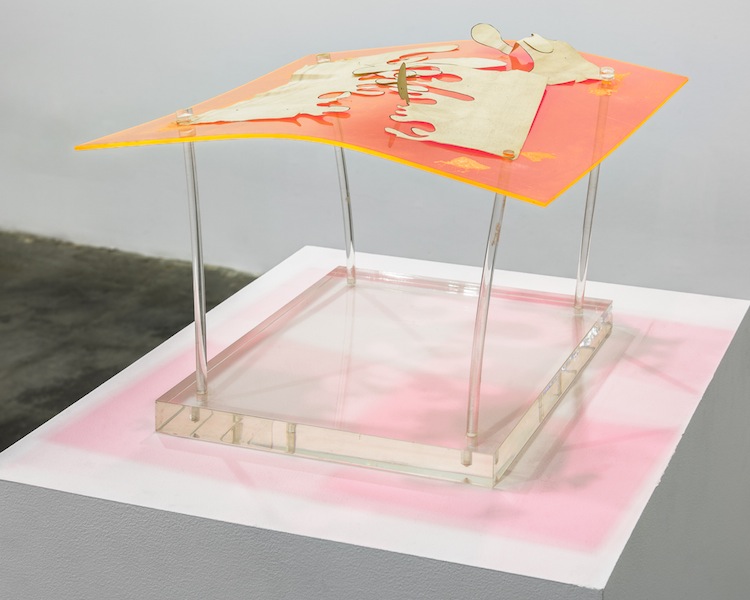
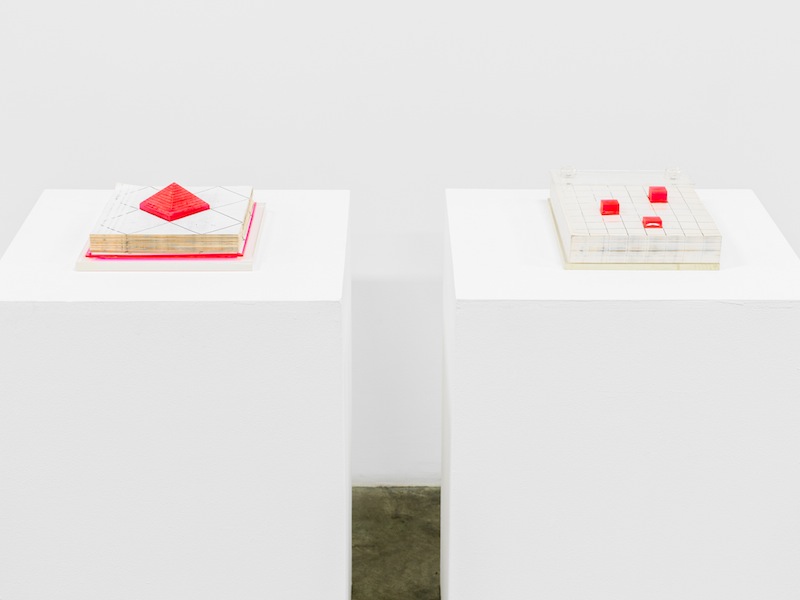
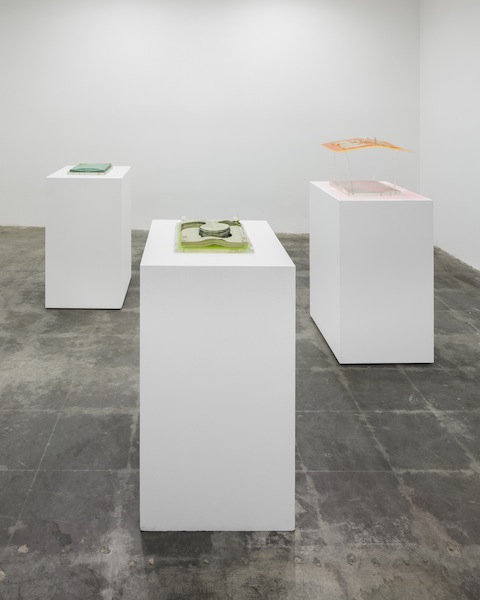
XEROX: BARBARA T. SMITH 1965 - 1966
16 February 2013 - 30 March 2013
Opening Reception: 16 February 2013, 6-9 pm
In 1965 Barbara T. Smith was living with her husband and three children in Pasadena, CA and was looking to make a lithograph; she found a XEROX machine instead. This exhibition will expose the majority of the works that she made during this time, using said XEROX machine. She made one large group of bound Xerox books called the Coffins and an unbound Poetry Set that included 5 individual folders: Joy, Rebellion, Sorrow, The Mystery and Child Voice. Along with these books there are pieces that are framed, exploring visual sequence, time and machine manipulation. There are about twenty Coffins and about twenty framed works. This is the first time that they have all been seen in over 40 years.
After being rejected from Gemini Gei’s newly formed lithography workshop Smith saw it as a motivation to turn away from this 19th century medium of lithography and turn to the 20th century printmaking medium, XEROX. She kept the leased XEROX 914 black and white machine, in her dining room. There she became flooded with the possibilities of electronically charged plastic toner particles, which are sintered onto the paper in direct replication of the object on the glass plate above. Smith was a visionary in seeing the artistic potential of the business machine.
The Xerox machine gave Smith the opportunity to immediately create exact black and white replicas of images or any object or form placed upon the machine. She began to experiment with how the machine could be used; the fluidity of the images that could be created; how images could be manipulated and how technical shifts, such as toner and paper style would affect the images. One such example in the exhibition is Katie, which is a framed set of six 8.5 x 11” sheets of paper of six copies of one photograph of her daughter Katie. Each page has different texture, tone and shadow according to how the machine was adjusted and the result is a stunning portrait of her daughter. This piece is an example of how Smith began to use the new medium of Xerox to consider her personal relationship with her daughter. At this time she was struggling in her marriage and held an unconscious dread that her family would soon split. In these pieces you see that she is coming into awareness about the struggle and sadness of this reality.
In the Coffins one also begins to see a glimpse of Smith’s later performance work. She began to experiment with placing her body on the glass plate of the machine giving way to new opportunities for explorations. There are pieces that are quite provocative, in which Smith fully exposed body on the machine. One such piece is ironically titled Do Nut Tuch!. In another she presses her chest against the machine, seeing the breasts as flat spherical forms instead of voluptuous sexy flesh. These particular books show Smith discovering how her body, her face, her hair look via the Xerox process. Others show a very different side, sometimes darker and more contemplative. These varied explorations come together to reveal an affirmation of herself as a woman. This moment in the work shows an amazing transition in her thought process: it is her body as female, her body as sex, her body as image, her body as medium. But then there is a conflict because these images of her body are then placed inside a book, hidden under a black cover, thus giving her a measure of privacy.
The XEROX works were made before she went to graduate school, and show Smith as a woman on the forefront of artistic practices, experimenting with technology, experimenting with her body, exposing herself emotionally and physically in ways that very few were willing to do. The exploration enveloped her and allowed her to take her self to the next level; to become the brilliance that she is.
Barbara T. Smith who is primarily known for her performative works and has lived and worked in the Los Angeles Area her whole life. After she received her BA from Pomona College in 1953, she married and had three children before returning to the University of California, Irvine for her MFA in 1971. She has been involved in the many important art and political movements and spaces including F-Space with Chris Burden and Nancy Buchanan. Much of her work address the social, spiritual and political struggles of women; using herself as a medium to work with.
By Danielle McCullough
Art:21 Blog; Looking at Los Angeles
19 March 2013
By Cindy Rehm
ssweatingblood.blogspot.com
7 March 2013
By Sharon Mizota
The Los Angeles Times
1 March 2013
"XEROX: Barbara T. Smith 1965 - 1966" at The Box is currently featured on artforum.com's "Must-See Shows" list, a selection of essential exhibitions worldwide.
For more information, please visit artofrum's guide here.